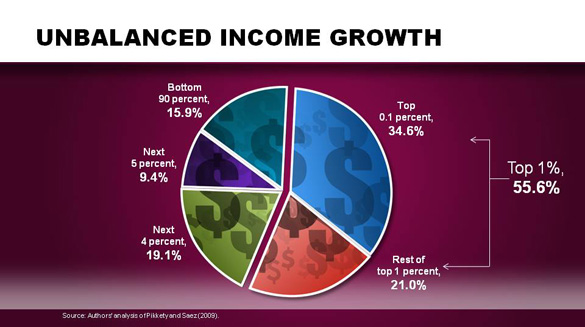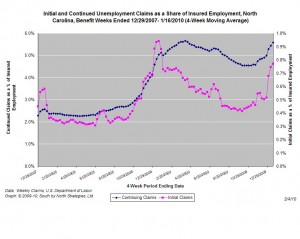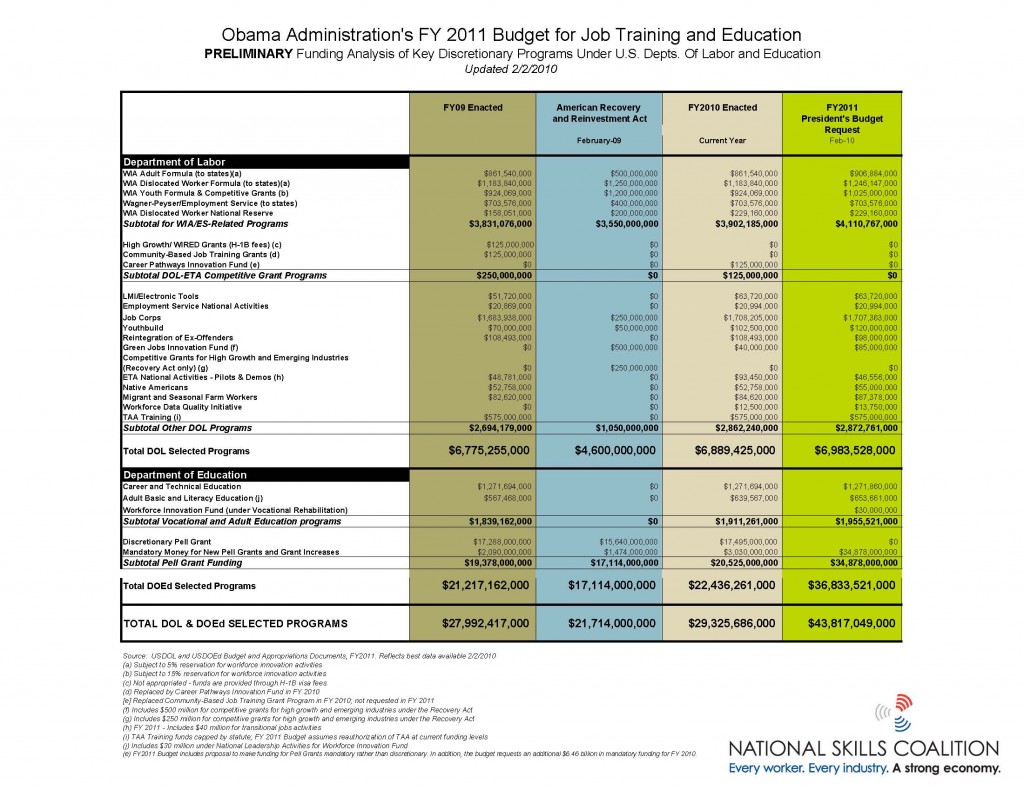Policy Points
05.02.2010
Policy Points
The national employment report for January points to a sickly labor market. Last month, employers eliminated 20,000 more payroll jobs than they added. Additionally, official revisions to 2009 estimates found that the economy lost 930,000 more jobs than first reported. Total job losses since Dec. 2007 now number 8.4 million.
In January, the nation’s employers eliminated 20,000 more payroll positions than they created. Although the November payroll data were revised upward (to +64,000 positions from +4,000), downward revisions to December data (to -150,000 from -85,000) more than offset the gains. And annual revisions to the 2009 estimates found that 930,000 more positions (seasonally adjusted) were lost than initially reported.
The extent of idle labor is reflected in the household data released today. In January, 14.8 million Americans – 9.7 percent of the labor force – were jobless and actively seeking work. Proportionally more adult male workers were unemployed than female ones (10 percent vs. 7.9 percent). Similarly, unemployment rates were higher among Black (16.5 percent) and Hispanic workers (12.6 percent) than among White ones (8.7 percent). The unemployment rate among teenagers was 26.4 percent.
Furthermore, newly available data show that 9.6 percent of all veterans were unemployed in January; the rate among veterans who had served since Sep. 2001 was 12.6 percent. Also, 15.2 percent of Americans with disabilities were unemployed last month.
Click here to read South by North Strategies full analysis of the January report.
05.02.2010
Policy Points
Updated data from the Economic Policy Institute trace the pattern of income growth between 1979 and 2009. As the graph below shows, 34.6% of all income growth over the past three decades has gone to the top one-tenth of 1% of all earners (some 13,000 families). The bottom 90% of all earners, meanwhile , has collectively seen only 15.9% of all income growth over the same period.

04.02.2010
Policy Points
Economic policy reports, blog postings, and media stories of interest:
04.02.2010
Policy Points
For the benefit week ending on January 16th, 16,517 North Carolinians filed initial claims for state unemployment insurance benefits, and 204,078 individuals applied for state-funded continuing benefits. Compared to the prior week, there were fewer initial and continuing claims. (Note the filing week only had four days due to the Martin Luther King Jr. Day holiday.) These figures come from data released today by the U.S. Department of Labor.
Averaging new and continuing claims over a four-week period — a process that helps adjust for seasonal fluctuations and better illustrates trends — shows that an average of 30,020 initial claims were filed over the last four weeks, along with an average of 217,879 claims. Compared to the previous four-week period, both initial and continuing claims were higher.

One year ago, the four-week average for initial claims stood at 37,912 and the four-week average of continuing claims equaled 203,249.
The graph (right) shows the changes in unemployment insurance claims (as a share of covered employment) in North Carolina since the recession’s start in December 2007.
Although new and continuing claims appear to have peaked for this business cycle, the claims levels remain elevated and point to a labor market that remains extremely weak. Especially troubling is the high level of continuing claims, which suggests that unemployed individuals are finding it extremely difficult to find new positions.
04.02.2010
Policy Points
The National Skills Coalition has released a preliminary analysis of proposed federal funding for workforce development programs during Fiscal Year 2011. The following chart (click to enlarge) summarizes proposed funding for key programs operated through the Departments of Labor and Education.





 Email Sign-Up
Email Sign-Up RSS Feed
RSS Feed